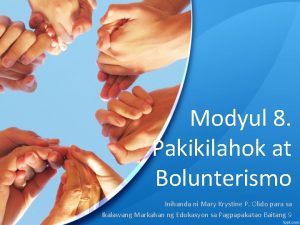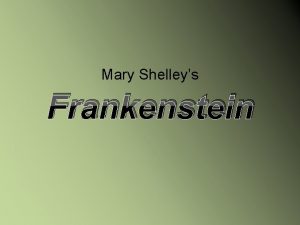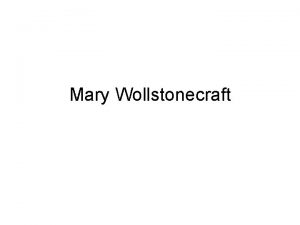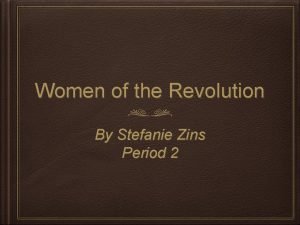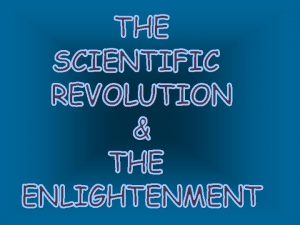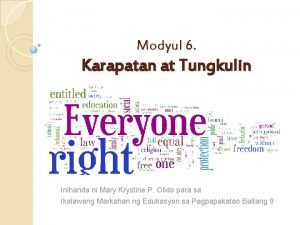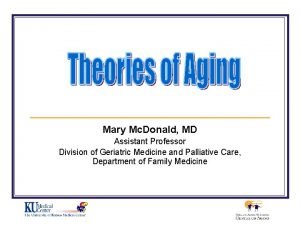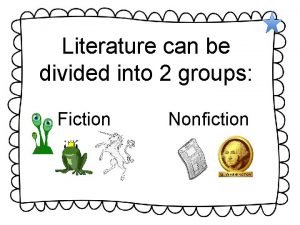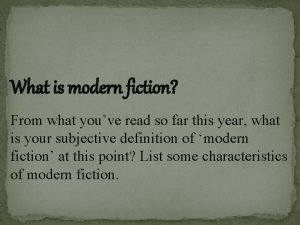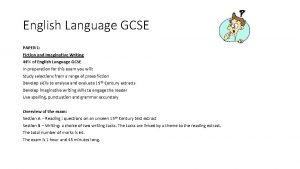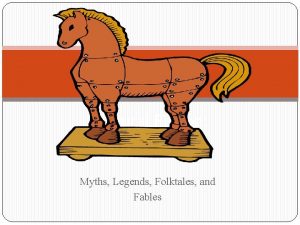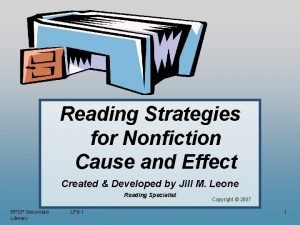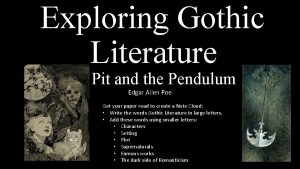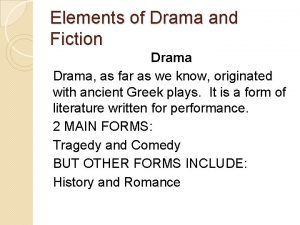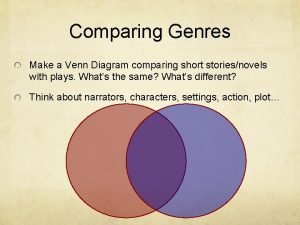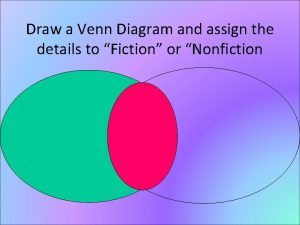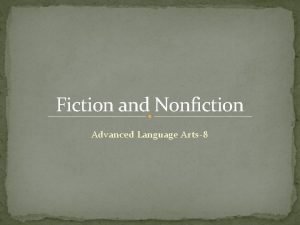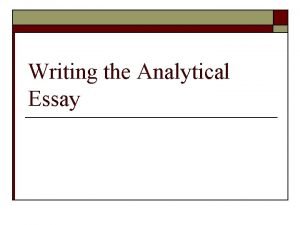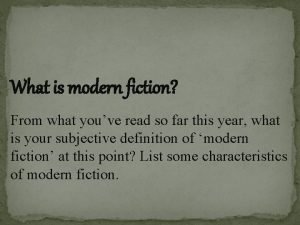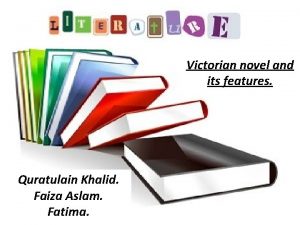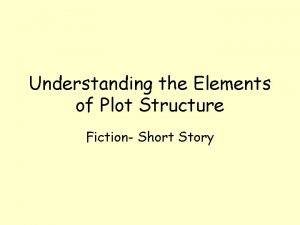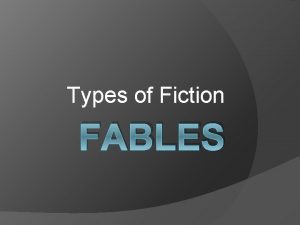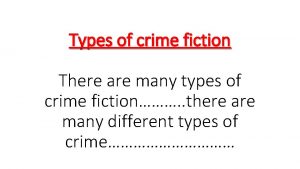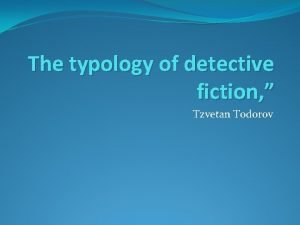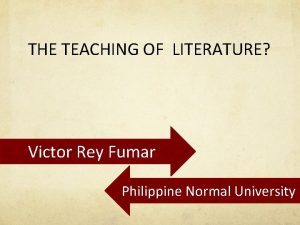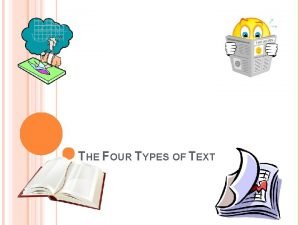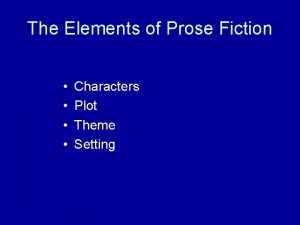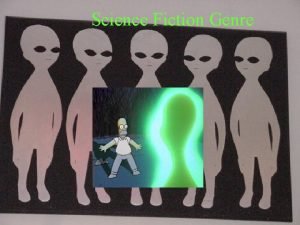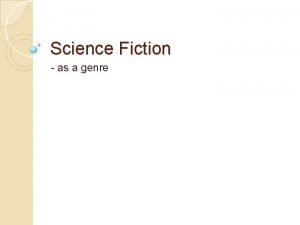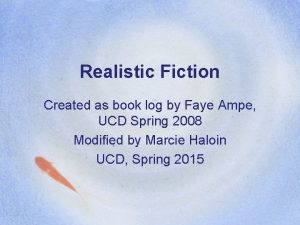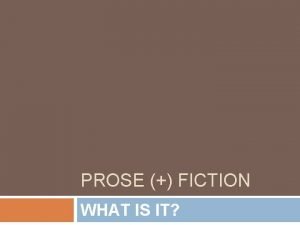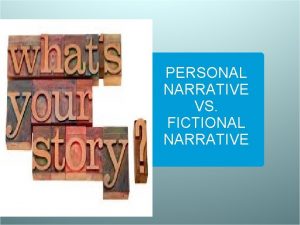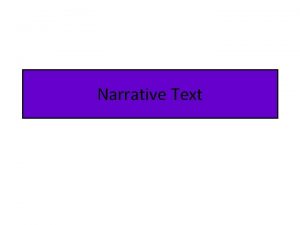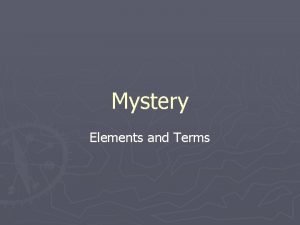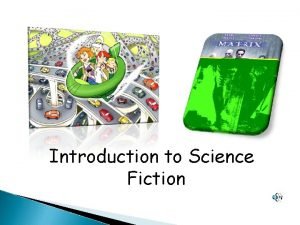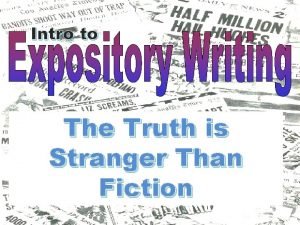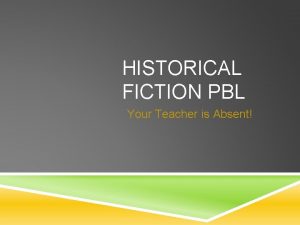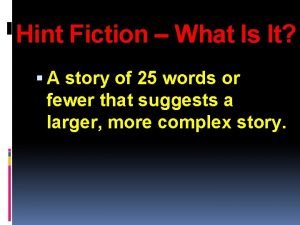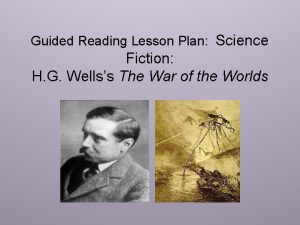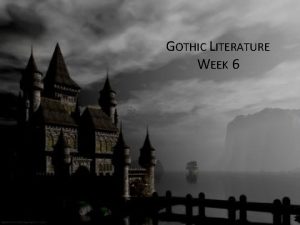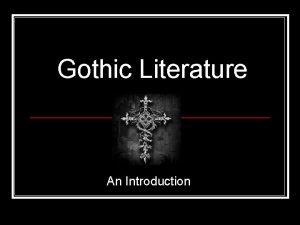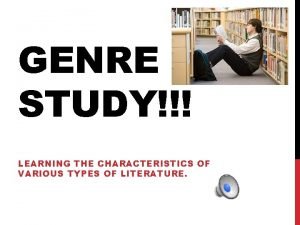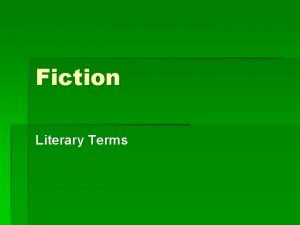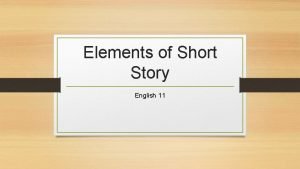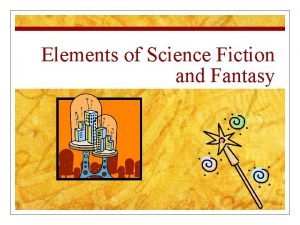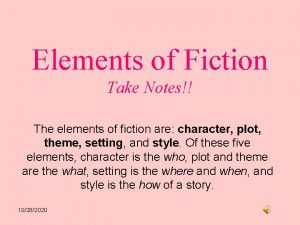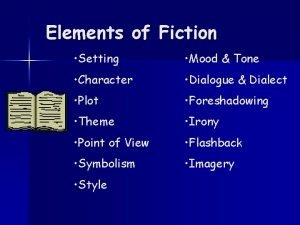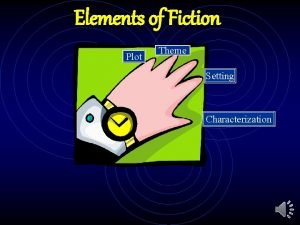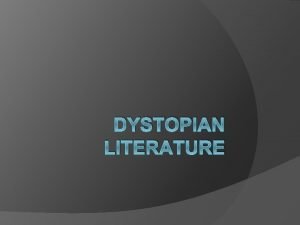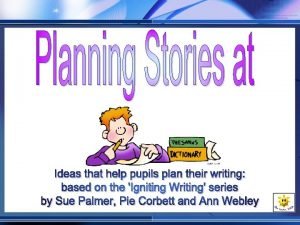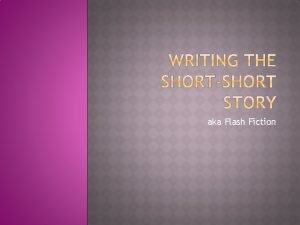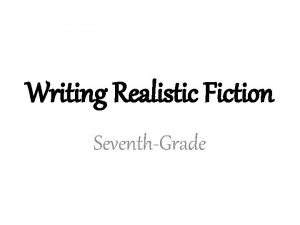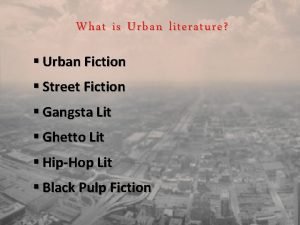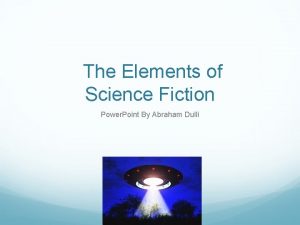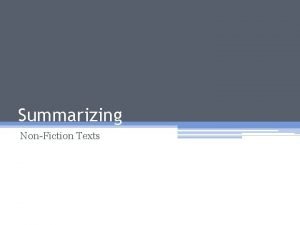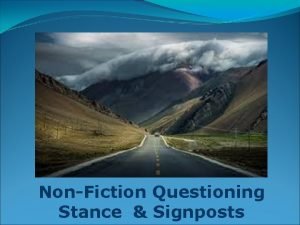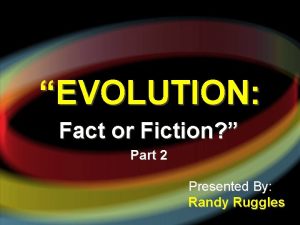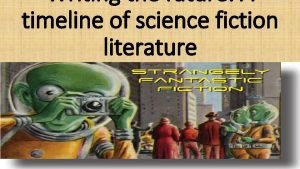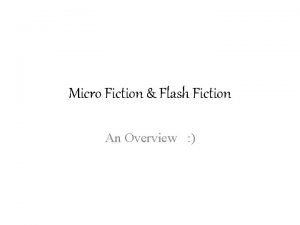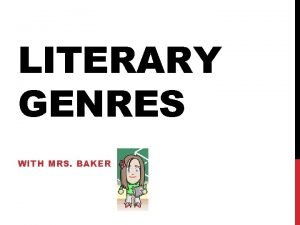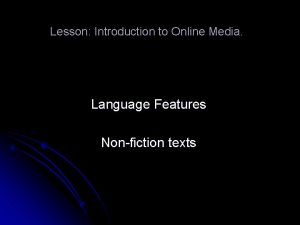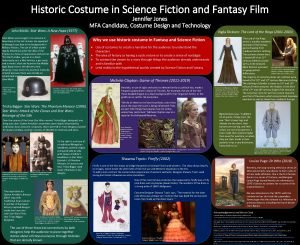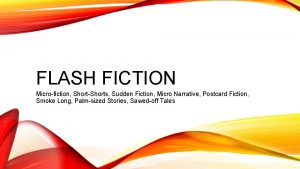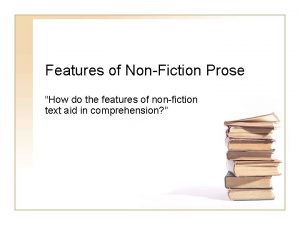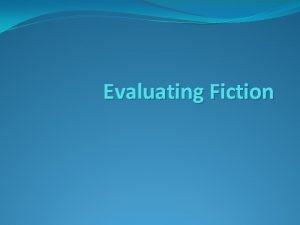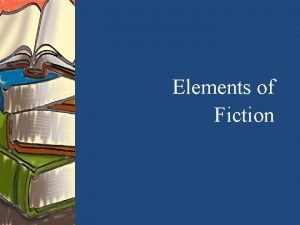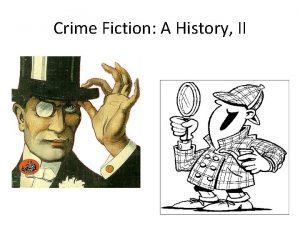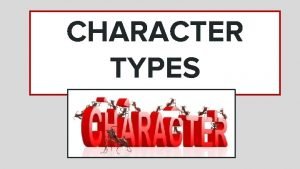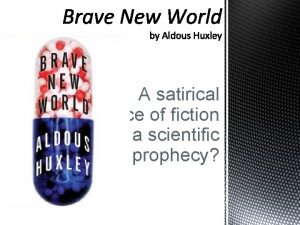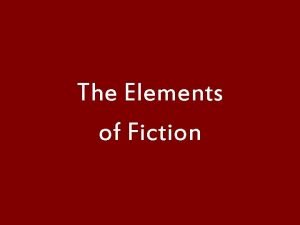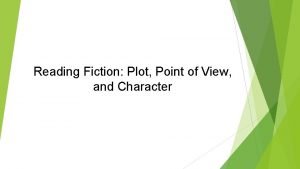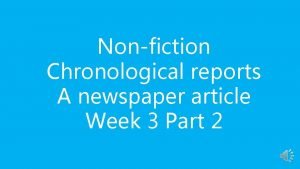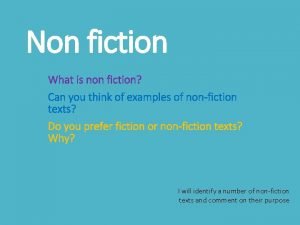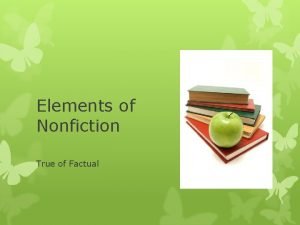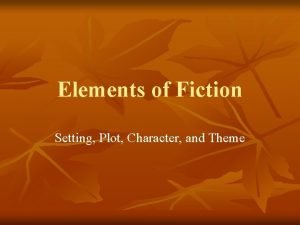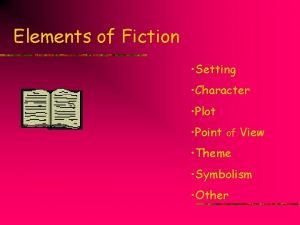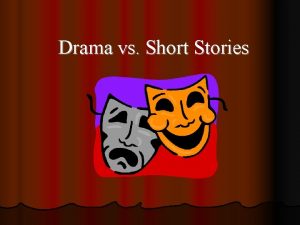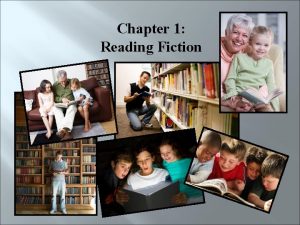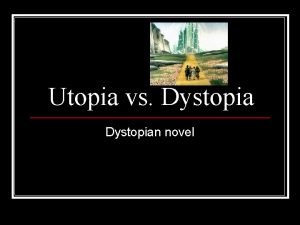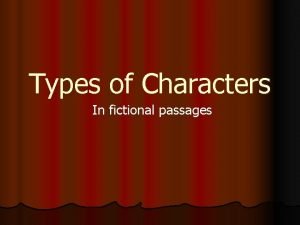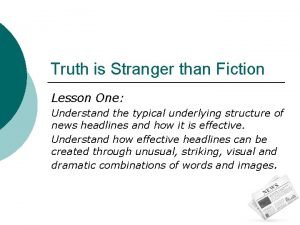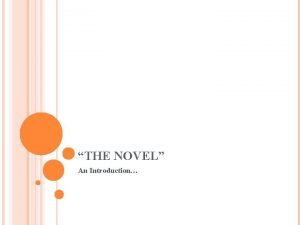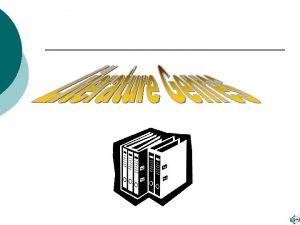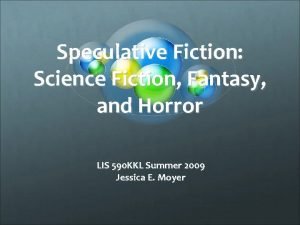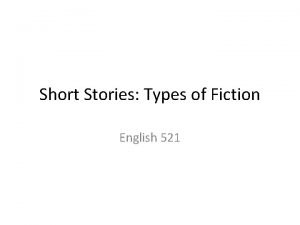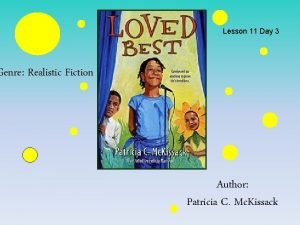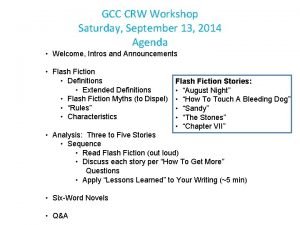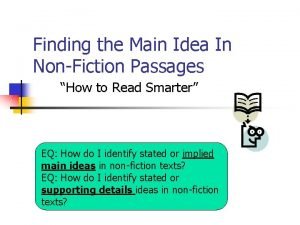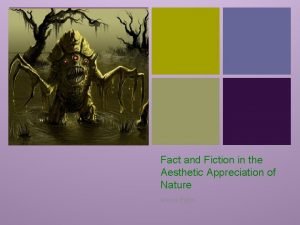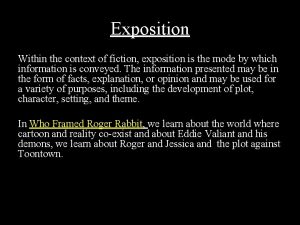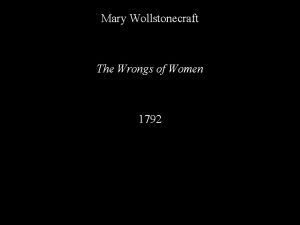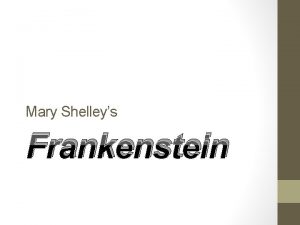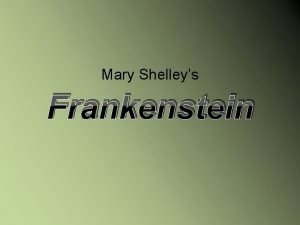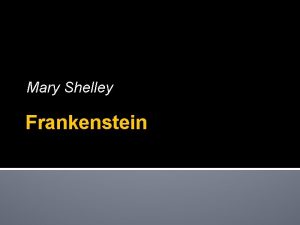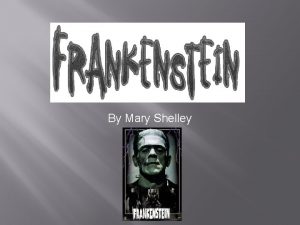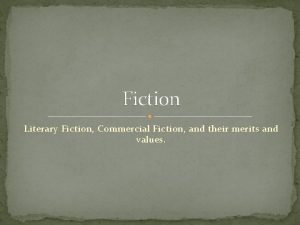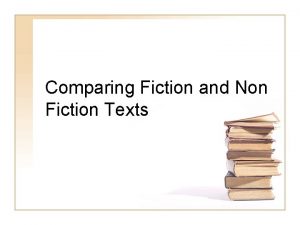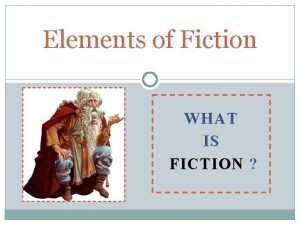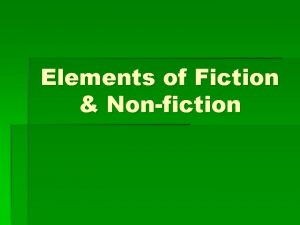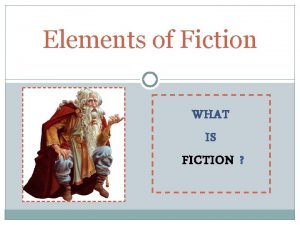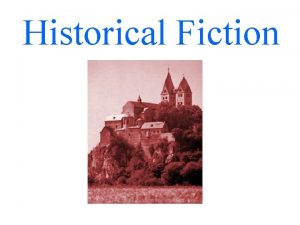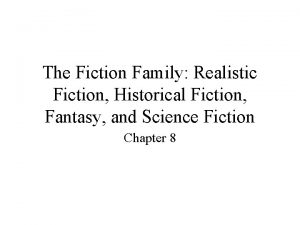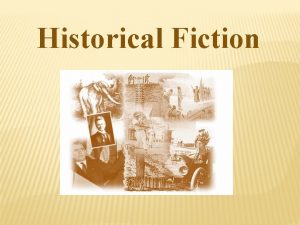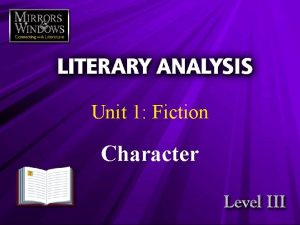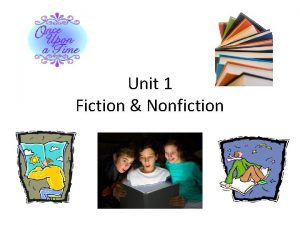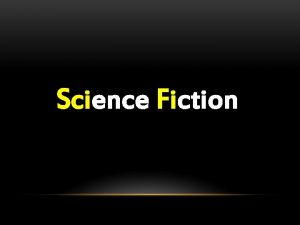Mary Wollstonecraft Mary a Fiction and The Wrongs






















































































































































































- Slides: 182

Mary Wollstonecraft Mary, a Fiction and The Wrongs of Women 1788 And 1798 L’exercice des plus sublimes vertus élève et nourrie le génie – J. J. Rousseau

Aristotle Mary Wollstonecraft 384 -322 B. C. 1759 -1797






Ø Introduction Ø Mary Wollstonecraft was one of the most innovative and politically engaged writers of the age of Revolution (1789) and Romanticism (1800 -1840). Ø Her achievement was to fashion a distinctively feminist discourse, in several different kinds of writing, including the novel. Ø She did this at a time and in a culture when women were largely excluded by custom, education, experience, and opportunity from writing and from the public sphere, and where the kinds of writing they were allowed to practise

Ø Introduction Ø Wollstonecraft’s achievement was the more remarkable for being realized despite personal difficulties, family responsibilities, stinted education, and social prejudice against women who lived and who wrote as she did. Ø In fact, she converted these into her feminist discourse, using the political philosophy of her day to argue that systemic injustice and oppression are experienced at the individual, domestic, and local level, and had to be resisted and changed there, as well as throughout the larger social system.

Ø Introduction Ø Long before the phrase gained wide circulation in the 1970 s, Wollstonecraft and her contemporaries believed that the personal is the political because politics, or relations and institutions of power, condition personal identity, social relationships, and life chances for everyone. Ø The circumstances of her time challenged her as woman and writer, then, but they also presented her with unique opportunities, and shaped her literary-political career.

Ø Introduction Ø If all feminisms are historically particular, influenced by and addressing specific historical and social circumstances, then the circumstances and events of Wollstonecraft’s day, and of her life, challenged and facilitated her achievement in fashioning a feminist discourse of and for her time. Ø The major factors in Wollstonecraft’s social and intellectual formation as a feminist for her time were her early family and social experience, her vocations before becoming a professional author, and her determined programme of self-education.

Ø Introduction Ø Her early family life and social experience made her painfully aware of inequalities of class and gender. Ø She became determined to avoid or transcend them by achieving personal independence and social usefulness, and by acquiring the ability, through reading and study, to reflect critically on her experience and her world so as to change them. Ø Go to 58

Ø Introduction Ø By the time she was born in 1759, the Wollstonecraft family had converted profits from silk weaving into property, and lived mainly from rents.

Ø Introduction Ø Such rentiers enjoyed higher social status than those in “trade’, or manufacturing and commerce, but ranked below the landed gentry and aristocracy. Ø Wollstonecraft’s father aspired to the landed gentry, and he set up as a gentleman farmer, but his improvidence and drinking led to a decline in fortune and status, creating competition and conflict within the family. Ø Feeling neglected in favour of her older brother and disgusted by her father’s vices, Wollstonecraft left home by her late teens.

Ø Introduction Ø Though employment opportunities outside marriage for women of her class were few, she tried each in turn— lady’s companion, teacher and school proprietor, and governess to an aristocratic Irish family. Ø These employments gave her financial independence but, more important, they enabled her to educate herself, to observe and reject hierarchies of class and gender, to consolidate her resistance to conventional social relationships and marriage, and to form her own network of like-minded, intellectual men and women.

Ø Introduction Ø One of these was Fanny Blood, with whom Wollstonecraft had a passionate friendship, set up a school outside London, and attended at her last illness and death. Ø Others included intellectual and literary clergymen and educated older women.

Ø Introduction Ø These relationships, reflected on and theorized in light of her eclectic reading, would he refigured and given central place in Wollstonecraft’s first novel, Mary: A Fiction (1788), for they enabled her to try alternatives to the social identities and relationships available to her at that time and which her family experience and social observation had taught her to reject.

Ø Introduction Ø Sensibility Ø Wollstonecraft: was able to connect her experience in this way because she formed her ideas and identity within the late eighteenth century culture of Sensibility, or Sentimentalism. Ø Sensibility provided the intellectual, aesthetic, and political framework for all of Wollstonecraft’s writings.

Ø Introduction Ø Sensibility Ø The central theme of the philosophy and literature of Sensibility was the relationship between the external natural and social world and the inner self, or ‘sensibility’.

Ø Introduction Ø [Note: Originating in philosophical and scientific writings, sensibility became an English-language literary movement, particularly in then-new genre of the novel. Ø Such works, called sentimental novels, featured individuals who were prone to sensibility, often weeping, fainting, feeling weak, or having fits in reaction to an emotionally moving experience. Ø If one were especially sensible, one might react this way to scenes or objects that appear insignificant to others. ]

Ø Introduction Ø [This reactivity was considered an indication of a sensible person's ability to perceive something intellectually or emotionally stirring in the world around them. Ø However, the popular sentimental genre soon met with a strong backlash, as anti-sensibility readers and writers contended that such extreme behavior was mere histrionics, and such an emphasis on one's own feelings and reactions a sign of narcissism. ]

Ø Introduction Ø Samuel Johnson, in his portrait of Miss Gentle, articulated this criticism: Ø She daily exercises her benevolence by pitying every misfortune that happens to every family within her circle of notice; she is in hourly terrors lest one should catch cold in the rain, and another be frighted by the high wind. Her charity shews by lamenting that so many poor wretches should languish in the streets, and by wondering what the great can think on that they do so little good with such large estates. ]

Emma Hamilton as Sensibility. Stipple engraving, 1789, after a painting by Geroge Romney

Emma Hamilton 1765 -1815

Ø [Emma, Lady Hamilton was an English model and actress, who is best remembered as the mistress of Lord Nelson and as the muse of the portrait artist George Romney].

Ø Introduction Ø Sensibility Ø Writers of Sensibility, including Wollstonecraft, drew on Enlightenment philosophers’ arguments that subjective identity was constructed by the mind from various physical sensations received from the external natural and social world. Ø Her early writings indicate that Wollstonecraft was familiar with these arguments, and her letters frequently registered her philosophical sense of the connection between her social experience and the condition, for better and too often for worse, of her mind and body.

Ø Introduction Ø Sensibility Ø Furthermore, Enlightenment political philosophers argued that the vicious and corrupt social, economic, and political system of things as they are would necessarily act on human bodies and physical senses to produce vicious and corrupted individual subjects and social relations. Ø Wollstonecraft would adapt this argument specifically to the condition of women.

Ø Introduction Ø Sensibility Ø But if a vicious system necessarily produced vicious individuals, how was that system to be changed? Ø One favoured solution was through individuals who were ‘enlightened’ and ‘sensible’, that is, morally, socially, and intellectually sensitive, and so able to recognize the vicious circle for what it was and show to change it.

Ø Introduction Ø Sensibility Ø Such a vanguard role appealed to people like Wollstonecraft across Europe and the Americas who felt excluded and alienated from the established system of social privilege and patronage dominated by the upper classes and, Wollstonecraft would insist, by men.

Ø Introduction Ø Sensibility Ø The ‘philosopher’ and ‘man of feeling’ envisaged by Enlightenment thought and Sentimental culture was the prototype of the revolutionary. Ø And what of the ‘female philosopher’ and ‘woman of feeling’? Ø However, Enlightenment philosophers and writers of Sensibility offered a contradictory representation of women.

Ø Introduction Ø Sensibility Ø On the one hand, because of women’s supposedly greater physiological delicacy than men, women were thought to the inherently and naturally liable to excessive emotion, less intellectual and rational than men, more likely to succumb to appetite and desire, and incapable of powerful imagination and creativity.

Ø Introduction Ø Sensibility Ø On the other hand, because of the same physiological difference, women were thought to be more refined in bodily sensation and consequently in thought and emotion, naturally more loving and nurturing, more susceptible to social sympathy and charity, more acute in aesthetic response, and more conciliating than men.

Ø Introduction Ø Sensibility Ø Philosophers such as David Hume (1711 -1776) also argued that women, supposedly gentler and more ‘sensible’ by nature, education, and social formation, had a major role to play in human ‘progress’ by civilizing men, naturally more aggressive and competitive, and making them fit for ‘civil society’, or a society based on free association of equal individuals.

Ø Introduction Ø Sensibility Ø Wollstonecraft rejected the sexist aspects of Sensibility as particularly damaging for women, encouraging them to affect genteel delicacy and indulge the feelings rather than cultivate the mind, and so making them liable to ‘romantic’ (or unrealistic) fantasies, vulnerable to courtly gallantry and seduction, and dependent on men.

Ø Introduction Ø Sensibility Ø She insisted that women’s weaknesses were produced by ‘education’, or processes of socialization and acculturation, rather than by nature. Ø Accordingly, Wollstonecraft would advocate ‘exercise’ one of her favourite words-of both mind and body for girls and women, in order to nurture robust bodies and therefore strong minds and disciplined feelings.

Ø Introduction Ø Sensibility Ø Despite the ambivalence of Enlightenment philosophy and Sentimental literature regarding women, they profoundly influenced Wollstonecraft’s ideological formation and her literary poetics and practice. Ø Wollstonecraft’s writings and especially her novels show that the most important influence for her as for many others was the Swiss writer Jean-Jacques Rousseau (1712 -78).

Ø Introduction Ø Sensibility Ø He was a leading figure in Sensibility’s challenge to the established old order of court monarchy and the political, ecclesiastical, and social networks it controlled. Ø His political works gave eloquent expression to ideals of egalitarianism, meritocracy, and civil society central to Sentimental politics.

Ø Introduction Ø Sensibility Ø Even more influential were Rousseau avant-garde Sentimental novel La Nouvelle Heloise (1761), his philosophical quasi-novel Emile: ou, l’éducation (1762), and his daringly autobiographical Confessions (1781 -8) and Reveries d’un promeneur solitaire (Reveries of a Solitary Walker, 1782). Ø In these works Rousseau connected psychological conflict and social alienation in an individual such as himself to the corrupt and unjust state of modern society,

Ø Introduction Ø Sensibility Ø By doing so, he enabled educated middle-class people to understand themselves as revolutionary subjects who were, inevitably, ‘solitary walkers’ unable to find happiness or a place in what they perceived to be the decadent and corrupt system of ‘things as they are’.

Ø Introduction Ø Sensibility Ø Wollstonecraft referred to herself as a ‘solitary walker’, thereby identifying herself with this vanguard.

Ø Introduction Ø Sensibility Ø Adam Smith’s Theory of Moral Sentiments (1759) furnished her with a philosophy of moral selfconsciousness, ethical conduct, social sympathy, civil society, and economic self-determination. Ø Hugh Blair’s Lectures on Rhetoric and Belles-Lettres (1783) provided a poetics of principled self-expression and communication for facilitating the creation of a civil society.

Ø Introduction Ø Sensibility Ø Wollstonecraft also read widely in the belles-lettres. Ø She found examples of innovative literary form combining a personal perspective with liberal, reformist, and humanitarian values in the libertarian poems of James Thomson, the meditative devotional poems of Edward Young, and William Cowper’s domestic epic The Task (1785).

Ø Introduction Ø Sensibility Ø Essayists from Samuel Johnson to Henry Mackenzie provided philosophical, religious, aesthetic, and social ideas familiarized to everyday life and reflection.

Ø Introduction Ø Sensibility Ø ‘Bluestocking’ women writers showed how to combine intellectual life with social philanthropy motivated by the kind of simple religious devotionalism promoted by Sensibility. Ø [The Blue Stockings Society was an informal women's social and educational movement in England in the mid 18 th century. The society emphasized education and mutual co-operation].

Ø Introduction Ø Sensibility Ø [Originally used to describe a man wearing blue worsted (wool instead of formal black silk) stockings; extended to mean ‘in informal dress’. Later the term denoted a person who attended the literary assemblies held ( c. 1750) by three London society ladies, where some of the men favored less formal dress. The women who attended became known as blue-stocking ladies or blue-stockingers].

Ø Introduction Ø Sensibility Ø Like the Bluestockings, Wollstonecraft was raised in the established state Church and rejected the religious scepticism of many men of the Enlightenment.

Ø Introduction Ø Sensibility Ø She found inspiration in the sermons of liberal churchmen and the writings of such ‘rational’ religious Dissenters as Richard Price (1723 -91), promoting religious toleration, humanitarianism, and moral, social, and political reform. Ø Echoes of all these writers appear in Wollstonecraft’s novels.

Ø Introduction Ø Sensibility Ø Together, such writers and their readers constituted a largely middle-class avant-garde, including women, who would over the next few decades lead social, cultural, political, and economic revolutions across Europe and beyond.

Ø Introduction Ø Sensibility Ø Wollstonecraft’s familial, social, and professional experience and her reading, correspondence, and social networks had formed her to identify with this avantgarde. Ø The opportunity now arose for her to join it as what she called the ‘first of a new genus’ (gender). Ø -a professional woman author-though a few others had preceded her.

Ø Introduction Ø Sensibility Ø Publication of her first book, Thoughts on the Education of Daughters (1787), led to an offer from her publisher, Joseph Johnson (1738 -1809), of work as translator, author, and editorial assistant on his new magazine, the Analytical Review. Ø Johnson was a leading publisher of the British and Continental European Enlightenments and the centre of a network of innovative thinkers and social activists.

Ø Introduction Ø Sensibility Ø Wollstonecraft joined this circle, and accelerated her intellectual, cultural, and political education there, while fashioning a literary career as a ‘female philosopher’.

Ø Introduction Ø Sensibility Ø At that time ‘philosopher’, like French philosophe, signified a public intellectual applying the social and political theories of Enlightenment and Sensibility to criticize the established order of ‘things as they are’. Ø But almost all philosophers and philosophes were men, many people doubted the capacity of women for disciplined thought or advanced learning, and women with intellectual pursuits were feared and ridiculed.

Ø Introduction Ø Sensibility Ø Though Wollstonecraft’s early writings practised ‘female philosophy’ under cover of genres and discourses conventionally regarded as ‘feminine’, she reconstructed them in the light of reformist Enlightenment ideas and Sentimental values, thereby anticipating her feminist work of the Revolutionary 1790 s. Ø Thoughts on the Education of Daughters, for example, revises the familiar ‘conduct book’ designed to form young ‘ladies’ for the marriage market.

Ø Introduction Ø Sensibility Ø To Wollstonecraft, such training left women superficial, pleasure-seeking, and dependent -a discontented and disruptive force in the domestic, social, and political spheres. Ø Instead, Thoughts aims to form self-governing women able to support themselves.

Ø Introduction Ø Sensibility Ø Embodying these ideas in fictional form, Wollstonecraft’s Original Stories from Real Life (1788) depicts an intellectual single woman educating two nieces for such autonomy and independence.

Ø Introduction Ø Sensibility Ø Similarly, Wollstonecraft’s literature anthology, The Female Reader (1789), provides short extracts of the kind that young women with domestic duties could find time to study and reflect upon in order to become selfgoverning, socially responsible, and thus better able to carry out the restricted roles allowed them in single or married life at that time.

Ø Introduction Ø Sensibility Ø Meanwhile, Wollstonecraft’s work for the Analytical Review, her translations, and her participation in Joseph Johnson’s social circle connected her to a Europe-wide circulation of ideas and literary innovation. Ø END I

Mary Wollstonecraft Mary, a Fiction 1788

Ø Mary: A Fiction – Introduction Ø Mary, A Fiction is the only complete novel by 18 thcentury British feminist Mary Wollstonecraft. Ø It tells the tragic story of a female's successive “romantic frienships" with a woman and a man. Ø Composed while Wollstonecraft was a governess in Ireland, the novel was published in 1788 shortly after her summary dismissal and her decision to embark on a writing career, a precarious and disreputable profession for women in 18 th-century Britain.

Ø Mary: A Fiction – Introduction Ø Inspired by Jena-Jacques Rousseau’s idea that geniuses teach themselves, Wollstonecraft chose a rational, selftaught heroine, Mary, as the protagonist. Ø Helping to redefine genius, a word which at the end of the 18 th century was only beginning to take on its modern meaning of exceptional or brilliant, Wollstonecraft describes Mary as independent and capable of defining femininity and marriage for herself.

Ø Mary: A Fiction – Introduction Ø According to Wollstonecraft, it is Mary's "strong, original opinions" and her resistance to "conventional wisdom" that mark her as a genius. Ø Making heroine a genius allowed Wollstonecraft to criticize marriage as well, as she felt geniuses were "enchained" rather than enriched by marriage. Ø Through this heroine Wollstonecraft also critiques 18 thcentury sensibility and its effects on women.

Ø Mary: A Fiction – Introduction Ø Mary rewrites the traditional romance plot through its reimagination of gender relations and female sexuality. Ø Yet, because Wollstonecraft employs the genre of sentimentalism to critique sentimentalism itself, her "fiction", as she labels it, sometimes reflects the same flaws of sentimentalism that she is attempting to expose. Ø Wollstonecraft later repudiated Mary, writing that it was laughable.

Ø Mary: A Fiction – Introduction Ø However, scholars have argued that, despite its faults, the novel's representation of an energetic, unconventional, opinionated, rational, female genius (the first of its kind in English literature) within a new kind of romance is an important development in the history of the novel because it helped shape an emerging feminist discourse. Ø END I

Ø Mary: A Fiction – The Plot Ø Mary begins with a description of the conventional and loveless marriage between the heroine's mother and father. Ø Eliza, Mary's mother, is obsessed with novels, rarely considers anyone but herself, and favours Mary's brother. Ø She neglects her daughter, who educates herself using only books and the natural world. Ø Ignored by her family, Mary devotes much of her time to charity.

Ø Mary: A Fiction – The Plot Ø When her brother suddenly dies, leaving Mary heir to the family's fortune, her mother finally takes an interest in her; Ø she is taught "accomplishments", such as dancing, that will attract suitors. Ø However, Mary's mother soon sickens and requests on her deathbed that Mary wed Charles, a wealthy man she has never met.

Ø Mary: A Fiction – The Plot Ø Stunned and unable to refuse, Mary agrees. Immediately after the ceremony, Charles departs for the Continent. Ø To escape a family who does not share her values, Mary befriends Ann, a local girl who educates her further. Ø Mary becomes quite attached to Ann, who is in the grip of an unrequited love and does not reciprocate Mary's feelings.

Ø Mary: A Fiction – The Plot Ø Ann's family falls into poverty and is on the brink of losing their home, but Mary is able to repay their debts after her marriage to Charles gives her limited control over her money. Ø Ann becomes comsumptive and Mary travels with her to Lisbon in hopes of nursing her back to health. Ø There they are introduced to Henry, who is also trying to regain his health.

Ø Mary: A Fiction – The Plot Ø Ann dies and Mary is grief-stricken. Ø Henry and Mary fall in love but are forced to return to England separately. Ø Mary, depressed by her marriage to Charles and grieving both Ann and Henry, remains unsettled, until she hears that Henry's consumption has worsened. Ø She rushes to his side and cares for him until he dies.

Ø Mary: A Fiction – The Plot Ø At the end of the novel, Charles returns from Europe; he and Mary establish something of a life together, but Mary is unhealthy and can barely stand to be in the same room with her husband; the last few lines of the novel imply that she will die young. Ø END II

Ø A Fiction – The Text Ø Wollstonecraft’s personal experience, self-education, and sense of belonging to an intellectual and political avantgarde converged in her first novel, published anonymously by Johnson as Maria: A Fiction (1788). Ø Though most novels were regarded at the time as subliterary, some Enlightenment and Sentimental writers had used the novel to critique contemporary society and politics, and well informed readers would expect that the few novels published by Johnson would be of this kind.

Ø A Fiction – The Text Ø Such readers would not have been disappointed by Mary, for it makes its author’s claim to be what was then called a ‘philosophical’ novelist, in the sense of the ‘philosopher’ as social and cultural critic. Ø Mary condemns systemic sexism in society and especially the contribution to it of a culture of false sensibility as embodied in a particular kind of ‘sentimental’ novel, or novel of manners.

Ø A Fiction – The Text Ø Many at that time, including Wollstonecraft, condemned such novels as inartistic, emotionally overstimulating, encouraging ‘romantic’ or unrealistic fantasies, and dangerously addictive, especially for women. Ø Accordingly, Mary was subtitled ‘A Fiction’ rather than ‘A Novel’, it openly criticized particular ‘sentimental’ novels, and it refused to follow their thematic and formal conventions.

Ø A Fiction – The Text Ø Instead, Mary uses both ‘story’ and ‘discourse’-or tale and literary form-to engage the ‘mind’ as well as the ‘sensibility’, the intellect as well as the feelings, of its readers. Ø The novel’s Advertisement, or preface, declares this purpose-to avoid imitating the typical sentimental novel and its merely emotional heroine by depicting, in ‘an artless tale’, ‘the mind of a woman, who has thinking powers’.

Ø A Fiction – The Text Ø Though such a character may not be possible in the real world, ‘in a fiction, such a being maybe allowed to exist; whose grandeur is derived from the operations of its own faculties, not subjugated to opinion; but drawn by the individual from the original source’ -that is, from the author. Ø In a letter to a friend, Wollstonecraft stated her purpose another way. ‘I have lately written. . . a tale, to illustrate an opinion of mine, that a genius will educate itself”.

Ø A Fiction – The Text Ø ‘Genius’ here is not the transcendent, superhuman individualism later promoted by Romantic culture but rather the distinct and unique individuality valued by the culture of Sensibility. Ø At that time, most would have considered only men to be capable of such ‘genius’, and most women to be mere copies of each other.

Ø A Fiction – The Text Ø The Advertisement asserts that typical novel heroines are copies of this copy, and readers of typical novels in turn copy these copies. Ø To break this vicious circle, the Advertisement declares, Mary will depict a female genius whose character is unique and independent, able to feel and think for herself, rather than imitative, derivative, and dependent, told by others how to think and feel.

Ø A Fiction – The Text Ø Since society does not educate women to be geniuses in this sense, the female genius must educate herself, must teach herself to understand how a corrupt and sexist society and culture have miseducated her for dependence and hence exploitation.

Ø A Fiction – The Text Ø Mary is, then, a feminist Sentimental Bildungsroman, or novel of ‘education’ -not just academic education or education in the broad sense of socialization and acculturation, but also education to a critical consciousness of how these processes shape or misshape young people-in this case, women.

Ø [Bildungsroman is the combination of two German words: Bildung, meaning "education, " and Roman, meaning "novel. " Fittingly, a "bildungsroman" is a novel that deals with the formative years of the main character - in particular, his or her psychological development and moral education. The bildungsroman usually ends on a positive note with the hero's foolish mistakes and painful disappointments over and a life of usefulness ahead. Goethe's late 18 th-century work Wilhelm Meisters Lehrjahre (Wilhelm Meister's Apprenticeship) is often cited as the classic example of this type of novel. Though the term is primarily applied to novels, in recent years, some English speakers have begun to apply the term to films that deal with a youthful character's coming-of-age].

Ø A Fiction – The Text Ø The Bildungsroman was a major form of the literature of Sensibility because it depicted the formation of a distinctive and autonomous individual subject who is therefore almost inevitably in conflict with the established, hierarchical social and political order.

Ø A Fiction – The Text Ø In many such novels, late eighteenth-century middleclass readers could find an idealized version of themselves as ‘beautiful souls’, ‘men (and often women) of feeling’, intellectually and morally meritorious subjects who felt marginalized, afflicted, and oppressed by an unjust and unreformed society.

Ø A Fiction – The Text Ø Mary depicts just such a subject. Ø It recounts the life of its heroine, from her neglected upbringing by decadently fashionable upperclass parents, through her childhood spent communing with nature and devising her own religion, her early intense friendships, an arranged but loveless and unconsummated marriage, her travels to Portugal and love for Henry, an expatriate English philosopher she meets there, her losses and sorrows, and her turn to social philanthropy.

Ø A Fiction – The Text Ø The novel ends with uncertainty as to whether or not Mary’s husband will return to consummate their marriage and with Mary’s yearning for death and-as the novel’s last words, quoting the Bible, put it- ‘that world where there is neither marrying, nor giving in marriage’. (instead they will be like the angels in haven- Matthew, 22: 30 and also in Mark, 12: 25)

Ø A Fiction – The Text Ø Marriage here is less a particular condition than a symbol for the entire system of the degradation, oppression, and exploitation of women in the interests of property controlled by men. Ø Yearning for death is not a surrender but, as usual in the literature of Sensibility, a protest against a world unfit for the ‘genius’.

Ø A Fiction – The Text Ø Most of the novel is taken up by the sympathizing narrator’s account of Mary’s thoughts and feelings, as well as Mary’s own ‘rhapsodies’, or expressive and lyrical writings on such subjects as nature, religious feeling (Chapter Twenty): Ø “I try to pierce the gloom, and find a resting place, where my thirst for knowledge will be gratified, and my ardent affections find an objective to fix them. Every thing material must change, happiness and this fluctuating principle is not compatible. Eternity, immateriality, and happiness, -what are ye? How shall I grasp the mighty and fleeing conceptions ye create? (p. 44).

Ø A Fiction – The Text Ø Most of the novel is taken up by the sympathizing narrator’s account of Mary’s thoughts and feelings, as well as Mary’s own ‘rhapsodies’, or expressive and lyrical writings on such subjects as nature, religious feeling (Chapter Twenty), ‘sensibility’ (Chapter Twenty-Four), and the pain of social alienation (Chapter Twenty-Three; end of Chapter Twenty-Four).

Ø A Fiction – The Text Ø The novel’s emphasis on Mary’s alienated subjectivity is sharpened by the presentation of major themes in Enlightenment and Sentimental criticism of the established social order.

Ø A Fiction – The Text Ø These include: Ø the evils of inequality of property, reinforced by laws; Ø patriarchy, or male domination of family, society, and the state; Ø the courtly culture of sexual double standard, amorous intrigue, and exploitation of women in all classes;

Ø A Fiction – The Text Ø and the corrupting effect of the social emulation of fashionable upper ranks by the middle and lower classes.

Ø A Fiction – The Text Ø This comprehensive critique is presented through brief social encounters, dialogues, Ø Mary’s observations and reflections (for example, her ‘philosophical’ travels in Portugal, Chapters Nine. Fourteen), Ø and descriptions such as that of Mary’s parents and their married life (Chapter One),

Ø A Fiction – The Text Ø and of the dilapidated English mansion which was once ‘the abode of luxury’, now a tenement teeming with the ‘vicious poor’ (Chapter Twenty-Three). Ø Wollstonecraft’s ‘Fiction’ criticizes not only fashionable society but also novels that depict, glamorize, and so help to reproduce it. Ø Consequently, Mary uses literary form both to represent a feminist vision of woman and society and to create an alternative, feminist l kind of novel. Ø END III

Mary Wollstonecraft The Wrongs of Women, of Maria 1798

Ø The Wrongs of Woman or, Maria Ø Though Mary, a Fiction, was published anonymously, the reader is cued to this rhetorical strategy in the novel’s Advertisement, which states that its heroine-genius is ‘drawn. . . from the original source’, or the author. Ø Thus there are two geniuses represented in the text-the protagonist and the narrator, or the ‘author’ that is implied by the narrator’s style and allusions. Ø Through this narrative method, Mary both depicts in its heroine and enjoins in its reader a sentimental education, or disciplining of subjectivity-the ‘genius’ educating itself.

Ø The Wrongs of Woman or, Maria Ø “And the old house-keeper told her stories, dead to her, and, at last, taught her to read. Her mother talked of enquiring for a governess when her health would permit, and, in the interim desired her own maid to teach her French. As she had learned to read, she perused with avidity every book that came to her own way, she considered every thing that came under her inspection, and learned to think. ” (p. 8).

Ø The Wrongs of Woman or, Maria Ø This ‘genius’ is not only narrated or dramatized in the career of the protagonist, but also implied and exemplified in the character of the narrator as a version of the author. Ø This narrative technique, in its early development by novelists in the 1780 s, would be refined further by Wollstonecraft in her second novel, The Wrongs of Woman, or Maria, published in 1798.

Ø The Wrongs of Woman or, Maria Ø This technique would also be developed steadily through the following century by novelists from Jane Austen to George Eliot to Katherine Mansfield to represent the full affective and intellectual potential of female subjects.

Ø The Wrongs of Woman or, Maria Ø The French Revolution: from Rights of Men to Rights of Woman Ø Mary: A Fiction was a sophisticated literary experiment, but was probably too innovative and unconventional for its time, and made little impact. Ø When asked about it a few years later, Wollstonecraft called an imperfect sketch, ‘a crude production, and do not very willingly put it in the way of people whose good opinion, as a writer, I wish for”.

Ø The Wrongs of Woman or, Maria Ø The French Revolution: from Rights of Men to Rights of Woman Ø By then, however, the French Revolution (Mary 5, 1789 to November 9, 1799 and the Terror period from July 1789 and July 1794) provided a new context for her formulation of a feminism and a feminist literary discourse for her time.


Louis XVI – 1754 -1793

Marie-Antoinette – 1755 -1793


Ø The Wrongs of Woman or, Maria Ø The French Revolution: from Rights of Men to Rights of Woman Ø In Britain many people, including those in her circle, welcomed the Revolution. Ø But Edmund Burke hitherto associated with political reform, attacked the Revolution and its British sympathizers, especially Richard Price in his Reflexions on the Revolution in France.

123422 January 23, 1793



October 16, 1793


[Edmund Burke [1729– 1797) was an Anglo-Irish sateman born in Dublin as well as an author, orator and liberal conservative political theorist and philosopher] who served as a member of parliament (MP) between 1766 and 1794 in the House of Commons with the Whig Party after moving to London in 1750] hitherto associated with political reform, attacked the Revolution and its British sympathizers, especially Richard Price [1723 -1791) was a British moral philosopher, nonconformist preacher and mathematician. He was also a political pamphleteer, active in radical, republican, and liberal causes such as the American Revolution. He was well-connected and fostered communication between a large number of people, including several of the Founding Fathers of the United States].

Ø The Wrongs of Woman or, Maria Ø The French Revolution: from Rights of Men to Rights of Woman Ø Burke used the rhetoric of Sensibility to cast himself as a ‘man of feeling’ grieving for the fallen French monarchy and aristocracy. Ø Wollstonecraft was outraged, disregarded the social conventions excluding women from politics and polemical writing, and quickly published an anonymous reply, A Vindication of the Rights of Men (1790).

Ø The Wrongs of Woman or, Maria Ø [The Rights of Men is a political publication which attacks aristocracy and advocates republicanism. Wollstonecraft'swas the first response to Burke’s Reflexions. Ø The Rights of Men was successful: it was reviewed by every major periodical of the day and the first edition, published anonymously, sold out in three weeks. Ø However, upon the publication of the second edition (the first to carry Wollstonecraft's name on the title page), the reviews began to evaluate the text not only as a political

Ø The Wrongs of Woman or, Maria Ø They contrasted Wollstonecraft's "passion" with Burke's "reason" and spoke condescendingly of the text and its female author. Ø This remained the prevailing analysis of the Rights of Men until the 1970 s, when feminism scholars revisited Wollstonecraft's texts and endeavoured to bring greater attention to their intellectualism].

Ø The Wrongs of Woman or, Maria Ø The French Revolution: from Rights of Men to Rights of Woman Ø She, too, deployed the poetics and rhetoric of Sensibility, here in an expressly political text, turning the rhetorical tables on Burke by casting herself as a person of both reason and feeling, more concerned for the poor and the victims of monarchy and aristocracy.

Ø The Wrongs of Woman or, Maria Ø The French Revolution: from Rights of Men to Rights of Woman Ø The book was well received until Wollstonecarft revealed her authorship, and she was condemned for intruding in a male domain. Ø But The Rights of Men established her as a public figure and she soon had occasion to go on to consider the rights of women. Ø She was 29 years old

Ø The Wrongs of Woman or, Maria Ø The French Revolution: from Rights of Men to Rights of Woman Ø A French government proposal to secure the Revolution by a national education system for all citizens allowed girls only basic instruction. Ø Wollstonecraft saw this as a fatal flaw in the Revolution and any state claiming to be based on the ‘rights of man’ and ‘reason’ and ‘virtue’, or informed and self-disciplined citizens.

Ø The Wrongs of Woman or, Maria Ø The French Revolution: from Rights of Men to Rights of Woman Ø Vindication of the Rights of Woman (1792), like A Vindication of the Rights of Men (1790), it blames oppression on inequality of property ownership, entrenched by unjust laws and justified by false arguments. Ø Rights of Woman argues that under the old monarchic regimes men controlled property and hence power by keeping women ignorant, weak, and dependent.

Ø The Wrongs of Woman or, Maria Ø The French Revolution: from Rights of Men to Rights of Woman Ø Wollstonecraft: concedes that men are physically stronger than women but denies that women are therefore intellectually and morally weaker and have to be controlled by men to ensure domestic, social, and national order.

Ø The Wrongs of Woman or, Maria Ø The French Revolution: from Rights of Men to Rights of Woman Ø On the contrary, she argues, women who are not educated to think and decide for themselves will seek unscrupulously for power over men, as under the corrupt old order, and the Revolution or any modernized, progressive state will fail.

Ø The Wrongs of Woman or, Maria Ø The French Revolution: from Rights of Men to Rights of Woman Ø Instead, educated women, with disciplined minds and feelings, could be useful to society by practising certain professions, and exercising the vote.

Ø The Wrongs of Woman or, Maria Ø The French Revolution: from Rights of Men to Rights of Woman Ø In a brief Advertisement, Wollstonecraft promised that a subsequent work would examine the laws relating to women in detail; Ø this work would in fact feminist novel, The Wrongs of Woman; or, Maria, while, Rights of Woman was well received and Wollstonecraft attempted to apply her Revolutionary feminism in her personal life, including an unconventional relationship with Joseph Johnson’s

Ø The Wrongs of Woman or, Maria Ø The French Revolution: from Rights of Men to Rights of Woman Ø [Joseph Johnson (1738 -1809) was an influential 18 thcentury London bookseller and publisher. His publications covered a wide variety of genres and a broad spectrum of opinions on important issues. Johnson is best Wakefield, as well as religious dissenters such as Joseph Priestley, Anne Laetitia Barbaud, Gilbert Wakefield, and George Walker].

Ø The Wrongs of Woman or, Maria Ø The French Revolution: from Rights of Men to Rights of Woman Ø Now her writing projects, interest in the Revolution, and desire to pursue progressive personal relationships all pointed to Paris. Ø At that time the dominant Revolutionary political factions were the moderate and constitutionalist Girondins. French counterparts to people like Wollstonecraft: and her circle.

Ø The Wrongs of Woman or, Maria Ø The French Revolution: from Rights of Men to Rights of Woman Ø Furthermore, Paris was full of political tourists, including people Wollstonecraft knew. Ø She set out for Paris in December 1792 and once there joined the British expatriate circle of Johnson’s friend Thomas Christie and soon began a relationship with the American adventurer Gilbert Imlay.

Ø The Wrongs of Woman or, Maria Ø The French Revolution: from Rights of Men to Rights of Woman Ø Meanwhile the radical and anti-feminist Jacobin faction seized power, and for her own safety Wollstonecraft registered as Imlay’s wife at the American embassy.

Ø The Wrongs of Woman or, Maria Ø The French Revolution: from Rights of Men to Rights of Woman Ø To earn money, she produced A history and vindication of the Girondin Revolution, published in 1794. Ø In May of that year she bore a daughter, Fanny, but the relationship with Imlay, along with her faith in the Revolution’s direction, was failing.

Ø The Wrongs of Woman or, Maria Ø The French Revolution: from Rights of Men to Rights of Woman Ø Imlay moved to London and, attempting reconciliation, Wollstonecraft travelled to Scandinavia with her infant and a woman servant, pursuing money owed to Imlay by business partners. Ø To re-establish her financial independence and literary career, she undertook a book on her travels to be published by Johnson.

Ø The Wrongs of Woman or, Maria Ø The French Revolution: from Rights of Men to Rights of Woman Ø At that time, the travelogue was the second most widely read kind of book after the novel. Ø Travelogues were of several kinds-economic and social description, cultural and artistic studies, political tourism, and self-representation of the author-traveller as ‘man (or occasionally woman) of feeling’.

Ø The Wrongs of Woman or, Maria Ø The French Revolution: from Rights of Men to Rights of Woman Ø Wollstonecraft’s Letters Written During a Short Residence in Norway, Sweden and Denmark (1795) combined elements of all these. Ø On her return from Scandinavia she found Imlay in a liaison with another woman and resolved to move on.

Ø The Wrongs of Woman or, Maria Ø The French Revolution: from Rights of Men to Rights of Woman Ø She resumed editorial work and reviewing for Johnson, re-established earlier friendships, and made new ones. Ø One of these was the anarchist philosopher and novelist, William Godwin (1756 -1836).

Ø The Wrongs of Woman or, Maria Ø The French Revolution: from Rights of Men to Rights of Woman Ø Within a few months Wollstonecraft and Godwin were lovers and, though both were philosophically and politically opposed to marriage as it was at that time, when Wollstonecraft became pregnant they decided to marry to protect her from public condemnation and consequent loss of literary employment.

Ø The Wrongs of Woman or, Maria Ø The French Revolution: from Rights of Men to Rights of Woman Ø The promise of the Revolution and its potential for promoting the ‘rights of woman’ seemed to be receding rapidly. Ø Undaunted, and to reinvigorate reformist discontent with the system of ‘things as they are’, Wollstonecraft began a feminist novel examining the social injustices of unreformed and unmodernized society as these injustices afflicted women in particular. END III

Ø The Wrongs of Woman or, Maria Ø That novel would be The Wrongs of Woman Ø Wollstonecraft’s circle now included writers who had taken up the novel with similar aims, believing that the novel could reach readers who would not open a polemical pamphlet or philosophical treatise. Ø These writers developed a fictional form at that time called the philosophical romance, later called the ‘novel of ideas’.

Ø The Wrongs of Woman or, Maria (92 -131) Ø Wollstonecraft’s The Wrongs of Woman; or, Maria, left incomplete at her death and published by Godwin in 1798, gives this form a specifically Revolutionary feminist turn and takes it further. Ø HERE

Ø The Wrongs of Woman or, Maria Ø The novel as a whole depicts the ‘wrongs’ of several women. Ø The main story recounts the formation of the young Maria as a mere ‘woman of feeling’ easily duped by the feigned sensibility and courtly gallantry of George Venables, who in fact marries her for her money. Ø After marriage, his genteel vices become evident, especially when he treats his wife as property and offers her to a business friend in exchange for a debt.

Ø The Wrongs of Woman or, Maria Ø Outraged, Maria flees, but after a series of adventures, during which she observes the wrongs of other women, her husband tracks her down, confines her in a private madhouse, and takes her daughter, so that he can control Maria’s property and the daughter’s inheritance. Ø Though imprisoned, Maria and another inmate, Darnford, become lovers, and gain the confidence of their warder Jemima, a former prostitute.

Ø The Wrongs of Woman or, Maria Ø When the madhouse is unexpectedly abandoned by its proprietor, the inmates escape, but Darnford is sued at law by Venables for alienation of his wife’s affections and when Maria tries to defend her right to choice in a mate, the judge rejects her ‘French principles’ -Revolutionary ideas of equality.

Ø The Wrongs of Woman or, Maria Ø Here the novel breaks off incomplete, though there are several alternative endings: Ø Maria finds Darnford unfaithful, Ø He attempts suicide and dies, Ø She recovers to live in despair, Ø is saved by Jemima and reunited with her daughter.

Ø The Wrongs of Woman or, Maria Ø The novel’s structure, narrative method, plot, characters, incidents, settings, and use of allusion and reference reinforce its argument that the ‘wrongs of woman’ are not women’s fault but systemic in an unreformed society and state. Ø In structure the novel is a frame narrative containing inserts stories of Maria (Chapters Seven-Fourteen) , Jemima (Chapter Five), and other women. Ø This structure generalizes the novel’s argument, showing that women of all social classes suffer wrongs.

Ø The Wrongs of Woman or, Maria Ø The intertwined stories imply that, in the state of ‘things as they are’, such wrongs are inevitable and universal. Ø The novel opens in medias res to create suspense and engage the reader, sympathetically describing Maria’s imprisoned situation, then recounting her liaison with Darnford. Ø The love of Maria and Darnford and her loss of her daughter arouse the sympathy of Jemima and spur her to recount her lifetime of wrongs.

Ø The Wrongs of Woman or, Maria Ø Then set into the narrative frame is Maria’s first person manuscript memoir addressed to her absent daughter but read by Darnford and Jemima. Ø The memoir recounts critically, from Maria’s new feminist understanding of herself and society, her narrowly feminine education and social formation for dependent femininity, inevitably leading husband’s exploitation and incarceration of her.

Ø The Wrongs of Woman or, Maria Ø The novel’s third-person narrative resumes with Maria’s adventures of flight and pursuit, containing imbedded stories recounted to Maria by other women victims of ‘things as they are’, and culminates in Maria’s written declaration of the rights of woman submitted to the court of law (Chapter Seventeen, pp. 170 -174).

Ø The Wrongs of Woman or, Maria Ø The turning-point in Maria’s understanding that the ‘wrongs of woman’ are systemic and not peculiar to her, let alone her fault, occurs in what seems a dark moment in her experience of these wrongs.

Ø The Wrongs of Woman or, Maria Ø When she protests at her husband’s attempt to exchange her sexual services for a debt, he locks her in a room, thereby paradoxically unlocking her feminist understanding of the ‘wrongs of woman’: Ø When left alone, I was a moment or two before I could recollect myself. One scene had succeeded another with such rapidity, I almost doubted whether I was reflecting on a real event. "Was it possible? Was I, indeed, free? " - Yes, free 1 termed myself, when I decidedly perceived the conduct I ought to adopt. How had I panted for liberty, that I would have purchased at any price, but that of my own esteem!’ (p. 144)

Ø The Wrongs of Woman or, Maria Ø In Enlightenment thought, are distinct aesthetic and moral categories, gendered masculine and feminine respectively:

Ø The Wrongs of Woman or, Maria Ø I rose, and shook myself; opened the window, and methought the air never smelled so sweet. The face of heaven grew fairer as I viewed it, and the clouds seemed to flit away obedient to my wishes, to give my soul, room to expand. I was all soul, and (wild as it may appear) felt as if l could have dissolved in the soft balmy gale that kissed my cheek, or have glided below the horizon on the glowing, descending beams. A seraphic satisfaction animated, without agitating my spirits; and my imagination collected, in visions sublimely terrible, or soothingly beautiful, an immense variety of the endless images, which nature affords, and fancy combines, of the grand fair. (p. 144).

Ø The Wrongs of Woman or, Maria Ø The novel’s Revolutionary feminist argument is further reinforced by use of literary and historical allusions and references -a favourite device of the political romancers in Wollstonecrafts circle. Ø Maria’s name, for example, makes a number of such allusions. Ø Maria is Mary (Wollstonecraft), but Maria or Mary was so common a name that it could almost signify ‘everywoman’.

Ø The Wrongs of Woman or, Maria Ø Maria may also be taken as an ironic reference to Mary, mother of Christ, the redeemer of humanity from the transgression of the first, sinning woman, Ø Eve, in the Bible-a narrative that Wollstonecraft reinterpreted in Rights of Woman as illustrating the historic vilification of women by men.

Ø The Wrongs of Woman or, Maria Ø A recent and politically pertinent reference would be to Marie Roland (1754 -93), centre of the Girondin revolutionaries, guillotined by the Jacobins, and author of a posthumous autobiographical Letter to Impartial Posterity (1795).

Ø The Wrongs of Woman or, Maria Ø Like the memoir of Wollstonecraft’s Maria, this was a confessional and self-vindicating autobiography, written in prison, and addressed to Roland’s absent daughter. Ø ‘Jemima’ is another ironic biblical reference-to one of Job’s daughters, who were to have equal inheritance with their brothers. Ø Here

Ø The Wrongs of Woman or, Maria Ø [Jemima (also written Jemimah, Hebrew: ימימה Yemimah) was the oldest of the three beautiful daughters of Job, named in the Bible as given to him in the later part of his life, after God made Job prosperous again. Jemima's sisters are named as Keziah and Keren-Happuch. Job's sons, in contrast, are not named. Jemima, along with her sisters, was described as the most beautiful women in the land. Also, unusually and in common with her sisters, Jemima was granted an inheritance by her father, with her brothers as might have been expected (Job 42: 15). Apart from these brief references at the end of the Book of Job, Jemima is not mentioned elsewhere in the Bible. The name Jemima means "turtledove“].


Ø The Wrongs of Woman or, Maria Ø George Venables, Maria’s husband, resembles in and vices George, Prince of Wales, much in the news while Wollstonecraft was writing her novel because of his debts, moral decadence, and highly publicized conflict with his wife, whom he wanted to have confined as a madwoman and whom he restricted from seeing their daughter (born in January 1796).


Ø The Wrongs of Woman or, Maria Ø Darnford echoes Darnley (1562 -1612), the lover and eventual betrayer of Mary, Queen of Scots-a familiar Sentimental historical figure for the woman of excessive feeling victimized by political intrigue.



Ø The Wrongs of Woman or, Maria Ø Most obviously, Maria begins to fall in love with Darnford before they even meet through reading his comments in a copy of Rousseau’s Sentimental novel of social criticism, Julie; ou, la nouvelle Héloise- widely regarded by counter-Revolutionaries as a morally and politically inflammatory work. Ø This reference encourages reading Wollstonecraft’s novel in relation to Rousseau’s representation of passionate love as an emancipatory subjective absolute that is denied to women in an unjust, sexist society-as Maria points out in her address to the court.

Ø The Wrongs of Woman or, Maria Ø A similarly suggestive reference (p. 128) is to Nicholas Rowe’s she-tragedy The Fair Penitent (1703), in which the heroine, Calista, declares her right to take a lover or husband by her own rather than by her family’s or society’s choice. Ø The play also featured the archetypal male seducer and betrayer, Lothario, and was often restaged in Wollstonecraft’s day, with her friend, the famous tragedian Sarah Siddons, as Calista.


Ø The Wrongs of Woman or, Maria Ø Even a passing reference, such as to John Dryden’s poem ‘Guiscard and Sigismunda’ (p. 79), contributes to the feminist theme, as the poem contains a stirring defence of women’s right to independence. Ø Together, such literary allusions suggest to the reader a canon of texts with feminist viewpoints. Ø Like the other novelist in her circle, too, Wollstonecraft reinforced her use of historical and literary allusions with research of various kinds into the “wrongs of woman”.


Ø The Wrongs of Woman or, Maria Ø Instances of such research include the laws of marriage, divorce, marital property, and child custody designed to keep women the property of men; Ø the operation of the poor laws and welfare provision, which bear heavily on women; Ø corrupt management of public and private institutions such as hospitals and madhouses;

Ø The Wrongs of Woman or, Maria Ø the forced conscription of soldiers and sailors, affecting their wives and children; Ø and even the precise, exploitative wages for particular kinds of women’s labour, such as clothes washing. Ø To observe an actual madhouse, Wollstonecraft visited Bedlam Hospital for the insane with Godwin and Joseph Johnson.

Ø The Wrongs of Woman or, Maria Ø Thus the novel is in effect the sequel, promised in the author’s Advertisement to A Vindication of the Rights of Woman, dealing with ‘the laws relative to women’, for the novel makes clear that the ‘wrongs of woman’ are based on sexist property laws and the economic exploitation of women’s bodies and labour. Ø As in Rights of Woman, Wollstonecraft relates the legal condition of women to such larger issues as corrupt electoral politics, parliamentary representation, and government.

Ø The Wrongs of Woman or, Maria Ø Finally, as in her earlier novel, Wollstonecraft again gave her fiction greater rhetorical force by incorporating autobiographical material. Ø As with Mary, A Fiction, most readers of The Wrongs of Woman would not know or need to know if material was taken from the author’s life or invented. Ø More important was that certain material be treated so as to convey a sense of autobiographic authenticity and hence authority--a conviction that the narrator-author knows whereof she speaks.

Ø The Wrongs of Woman or, Maria Ø In The Wrongs of Woman such authenticity works in two converging ways-through the narrator and through the protagonist. Ø As in Mary, use of free indirect discourse, or reported inward speech and thought, creates sympathy between third-person narrator and protagonist.

Ø The Wrongs of Woman or, Maria Ø In The Wrongs of Woman, this sympathy is established from the opening pages in the narrator’s representation of Maria’s situation, and especially her maternal feelings, enhanced by the way the novel starts in media res, creating suspense and interest, and continues through much of the rest of the novel (Chapters One--Four, Six, Fifteen. Seventeen). Ø Such close identification of narrator and protagonist implies concordance of experience and knowledge between them, and aims to engage the reader, female or male, in this relationship.

Ø The Wrongs of Woman or, Maria Ø This engagement has a ‘philosophical’ aim, however. For example, after representing Maria’s situation and maternal feelings in the opening paragraphs, the narrator goes on to represent Maria reflecting· on or theorizing her situation and feelings to reach a feminist understanding of them as the consequences of systemic injustice to women (pp. 69 -70). Ø From the opening pages of the novel and throughout the first four chapters, narrator and protagonist display a feminist understanding of the ‘wrongs of woman’ -an understanding that the reader is encouraged to participate in through the narrative method of free indirect discourse.

Ø The Wrongs of Woman or, Maria Ø Maria’s inset story of her life (Chapters Seven-Fourteen) then recounts how she arrived understanding, at the moment when she feels free, because subjectively free, even though confined by her husband, in the passage quoted earlier. Ø Thus Maria’s inset-autobiography recounts the achievement of a feminist consciousness that is also displayed in both protagonist and narrator in the novel’s opening chapters in two ways:

Ø The Wrongs of Woman or, Maria Ø through vicarious of wrongs of woman and progress to feminist understanding of them in Maria’s autobiography (and to some extent in Jemima’s) Ø and through identification with the character of the narrator, as a version of the author in the text. Ø Such invoking of authority from personal experience converges with the novel’s use of research and historical and literary allusions to create not only a dense representation of the ‘wrongs of woman’ in all classes, past and present, but also a specifically feminist knowledge.

Ø The Wrongs of Woman or, Maria Ø The culmination of the protagonist’s acquisition of this knowledge is her feminist manifesto, submitted the court and jury near the end of the novel, and recalling and subsuming Wollstonecraft’s own Vindication of the Rights of Woman. Ø As in Rights of Woman, the novel presents such experience and knowledge, which are usually restricted to the private and domestic sphere, as also legitimate and potentially transformative for the public, political sphere.

Ø The Wrongs of Woman or, Maria Ø Conclusion Ø Maria itself may be included in this revolutionary feminine-feminist discourse, since novels were often regarded at the time as a ‘feminine’ genre. Ø Through these devices, Wollstonecraft aimed to create a new, feminist form of the novel for her time, designed to convey powerfully, to both men and women readers, the relationship between large social, political, and economic structures and the ‘wrongs of woman’ of different classes in everyday life.

Ø The Wrongs of Woman or, Maria Ø Wrongs of Woman may seem problematic, however, because of its uncertain resolution. Ø Wollstonecraft did not live to complete her novel, and left several sketched endings (pp. 175 -177). Ø The longest of these seems to leave the protagonist, her daughter, and her follower-servant-friend as a small sisterhood of different generations and classes, facing an uncertain future with a feminist understanding of ‘things as they are’.

Ø The Wrongs of Woman or, Maria Ø No matter which of the sketched endings Wollstonecraft might finally have preferred, however, it is clear that, as the novel’s title indicates, its purpose is protest more than a programme for reform. Ø Ø It aims to make readers recognize-and resent-the ‘wrongs of woman’ and the unjust system of ‘things as they are’ that causes them. Ø This is the necessary first step towards systemic change and, as with Mary, the novel’s open ending leaves readers to imagine how such change might be brought

Ø The Wrongs of Woman or, Maria Ø The Fate of Revolutionary Feminism Ø What more Wollstonecraft’s novel, if completed, might have said, Ø what more it might have achieved in effecting change, and Ø what more Wollstonecraft might have become, had she lived, were overtaken by events. .

Ø The Wrongs of Woman or, Maria Ø The accidents of mortality overtook Wollstonecraft herself, and the counter-Revolutionary reaction and subsequent emergence of political liberalism and cultural Romanticism overtook Wollstonecraft’s Revolutionary feminism and her novel.

Ø The Wrongs of Woman or, Maria Ø The Fate of Revolutionary Feminism Ø Before she could complete and publish Wrongs of Woman, Wollstonecraft died in September 1797 from complications of childbirth, after bearing another daughter, named Mary-later Mary Shelley. Ø Wollstonecraft’s grief-stricken husband published his edited version of the novel, along with some letters and other fragments and his biography of her, early in 1798.

Ø The Wrongs of Woman or, Maria Ø The Fate of Revolutionary Feminism Ø Political conservatives seized the occasion to ridicule Wollstonecraft and her work for what the judge in Wrongs of Woman called ‘French principles’. Ø Moral conservatives rejoiced in her death as divine punishment for a sinful life and unfeminine writings. Ø Wollstonecraft and her work remained under a cloud and did not re-enter public discussion until suffragist feminism of the mid-nineteenth century.

Ø The Wrongs of Woman or, Maria Ø The Fate of Revolutionary Feminism Ø The feminist movement of the 1960 s saw her as a pioneer ‘liberal’ feminist concerned to establish women’s capacity for sovereign subjectivity and thus civil and political rights, and produced new biographies and editions of her work. Ø Since then, feminist psychoanalytic critics have examined Wollstonecraft’s life and writings as instances of the psycho-social ‘wrongs of woman’ and resistance to them.

Ø The Wrongs of Woman or, Maria Ø The Fate of Revolutionary Feminism Ø Historians of political theory have examined her work as political philosophy. Ø Historicist and materialist feminist critics have sought to situate her in historical, social, cultural, political, and economic contexts. Ø Wollstonecraft and her writings remain without closure, still open to different readings and the recuperation of their revolutionary potential.

Ø The Wrongs of Woman or, Maria Ø The Fate of Revolutionary Feminism Ø Wollstonecraft and her writings remain without closure, still open to different readings and the recuperation of their revolutionary potential. Ø The End

Notes from Gary Kelly
 Mary wollstonecraft mary a fiction
Mary wollstonecraft mary a fiction Tatlong t sa pakikilahok at bolunterismo
Tatlong t sa pakikilahok at bolunterismo Mary wollstonecraft daughter
Mary wollstonecraft daughter Mary wollstonecraft
Mary wollstonecraft Olympe de gouges accomplishments
Olympe de gouges accomplishments Mary wollstonecraft
Mary wollstonecraft Ang ay mga prinsipyong gumagabay sa pananaw
Ang ay mga prinsipyong gumagabay sa pananaw Mary quiceno md
Mary quiceno md Elements of nonfiction prose
Elements of nonfiction prose Fiction and non fiction examples
Fiction and non fiction examples Genre of speculative fiction
Genre of speculative fiction Contemporary realism literature
Contemporary realism literature Hình ảnh bộ gõ cơ thể búng tay
Hình ảnh bộ gõ cơ thể búng tay Bổ thể
Bổ thể Tỉ lệ cơ thể trẻ em
Tỉ lệ cơ thể trẻ em Gấu đi như thế nào
Gấu đi như thế nào Tư thế worm breton là gì
Tư thế worm breton là gì Alleluia hat len nguoi oi
Alleluia hat len nguoi oi Các môn thể thao bắt đầu bằng tiếng nhảy
Các môn thể thao bắt đầu bằng tiếng nhảy Thế nào là hệ số cao nhất
Thế nào là hệ số cao nhất Các châu lục và đại dương trên thế giới
Các châu lục và đại dương trên thế giới Công thức tính độ biến thiên đông lượng
Công thức tính độ biến thiên đông lượng Trời xanh đây là của chúng ta thể thơ
Trời xanh đây là của chúng ta thể thơ Mật thư anh em như thể tay chân
Mật thư anh em như thể tay chân Làm thế nào để 102-1=99
Làm thế nào để 102-1=99 Phản ứng thế ankan
Phản ứng thế ankan Các châu lục và đại dương trên thế giới
Các châu lục và đại dương trên thế giới Thơ thất ngôn tứ tuyệt đường luật
Thơ thất ngôn tứ tuyệt đường luật Quá trình desamine hóa có thể tạo ra
Quá trình desamine hóa có thể tạo ra Một số thể thơ truyền thống
Một số thể thơ truyền thống Cái miệng nó xinh thế chỉ nói điều hay thôi
Cái miệng nó xinh thế chỉ nói điều hay thôi Vẽ hình chiếu vuông góc của vật thể sau
Vẽ hình chiếu vuông góc của vật thể sau Thế nào là sự mỏi cơ
Thế nào là sự mỏi cơ đặc điểm cơ thể của người tối cổ
đặc điểm cơ thể của người tối cổ V cc cc
V cc cc Vẽ hình chiếu đứng bằng cạnh của vật thể
Vẽ hình chiếu đứng bằng cạnh của vật thể Phối cảnh
Phối cảnh Thẻ vin
Thẻ vin đại từ thay thế
đại từ thay thế điện thế nghỉ
điện thế nghỉ Tư thế ngồi viết
Tư thế ngồi viết Diễn thế sinh thái là
Diễn thế sinh thái là Dot
Dot Số.nguyên tố
Số.nguyên tố Tư thế ngồi viết
Tư thế ngồi viết Lời thề hippocrates
Lời thề hippocrates Thiếu nhi thế giới liên hoan
Thiếu nhi thế giới liên hoan ưu thế lai là gì
ưu thế lai là gì Khi nào hổ con có thể sống độc lập
Khi nào hổ con có thể sống độc lập Khi nào hổ mẹ dạy hổ con săn mồi
Khi nào hổ mẹ dạy hổ con săn mồi Sơ đồ cơ thể người
Sơ đồ cơ thể người Từ ngữ thể hiện lòng nhân hậu
Từ ngữ thể hiện lòng nhân hậu Thế nào là mạng điện lắp đặt kiểu nổi
Thế nào là mạng điện lắp đặt kiểu nổi What is modern fiction
What is modern fiction English fiction and imaginative writing
English fiction and imaginative writing Brer possum's dilemma
Brer possum's dilemma Nonfiction cause and effect
Nonfiction cause and effect Flash fiction and short story elements
Flash fiction and short story elements Elements of gothic fiction in the pit and the pendulum
Elements of gothic fiction in the pit and the pendulum Elements of fiction and drama
Elements of fiction and drama Venn diagram of short story and novel
Venn diagram of short story and novel Fiction and nonfiction venn diagram
Fiction and nonfiction venn diagram What's science fiction
What's science fiction Elements of fiction and nonfiction
Elements of fiction and nonfiction Define analytical essay
Define analytical essay Modern fiction meaning
Modern fiction meaning What is genre
What is genre Characteristics of a victorian novel
Characteristics of a victorian novel Elements of fiction plot diagram
Elements of fiction plot diagram Fables defintion
Fables defintion Types of crime fiction
Types of crime fiction Typology of detective fiction summary
Typology of detective fiction summary Doodle fiction
Doodle fiction Narrative text examples
Narrative text examples Prose fiction
Prose fiction Historical fiction defintion
Historical fiction defintion Science fiction characteristics
Science fiction characteristics Science fiction purpose
Science fiction purpose Example of folklore
Example of folklore Realistic fiction defintion
Realistic fiction defintion The hello goodbye window summary
The hello goodbye window summary What is prose
What is prose Fictional personal narrative
Fictional personal narrative Denotative dog
Denotative dog Features of a narrative text
Features of a narrative text Realistic fiction elements
Realistic fiction elements Elements of a mystery genre
Elements of a mystery genre Cinderella example of short story with elements
Cinderella example of short story with elements Literary elements and techniques
Literary elements and techniques Science fiction lighting
Science fiction lighting What is science fiction story
What is science fiction story Truth is stranger than fiction examples
Truth is stranger than fiction examples Science fiction characteristics
Science fiction characteristics What is horror
What is horror Characteristics of historical fiction
Characteristics of historical fiction Hint fiction
Hint fiction Looking at science fiction lesson plan
Looking at science fiction lesson plan Gothic literature meaning
Gothic literature meaning Gothic fiction examples
Gothic fiction examples Characteristics of historical fiction
Characteristics of historical fiction Foils in literature
Foils in literature Short story literary term
Short story literary term Elements of short story setting
Elements of short story setting What are science fiction elements
What are science fiction elements Elements fantasy
Elements fantasy Elements of fiction theme
Elements of fiction theme Mood of dialogue
Mood of dialogue Elements of theme
Elements of theme Definition dystopian literature
Definition dystopian literature It refers to a mode of fiction represented in a performance
It refers to a mode of fiction represented in a performance What are signposts in reading
What are signposts in reading Different types of stories
Different types of stories Flash fiction structure
Flash fiction structure Flash fiction examples
Flash fiction examples Realistic fiction story ideas
Realistic fiction story ideas African american authors urban fiction
African american authors urban fiction Unsur pembangun prosa fiksi
Unsur pembangun prosa fiksi Common elements of science fiction
Common elements of science fiction Pulp fiction
Pulp fiction Nonfiction text summary
Nonfiction text summary Defintion of fiction
Defintion of fiction Extreme language signpost
Extreme language signpost And then there were none unit plan
And then there were none unit plan What is a literary device in a poem
What is a literary device in a poem Pulp fiction three act structure
Pulp fiction three act structure Polish jokes
Polish jokes The paring knife by michael oppenheimer
The paring knife by michael oppenheimer Morning in nagrebcan characters
Morning in nagrebcan characters Evolution fact fiction or opinion
Evolution fact fiction or opinion Elements of fiction prose
Elements of fiction prose Fiction
Fiction Types of characters
Types of characters Lewis fanfic
Lewis fanfic Fiction
Fiction Flash fiction description
Flash fiction description Essential questions for literature
Essential questions for literature Language features of non fiction texts
Language features of non fiction texts Costume science fiction
Costume science fiction Genres and subgenres
Genres and subgenres Sudden fiction meaning
Sudden fiction meaning Features of non fiction prose
Features of non fiction prose Commercial fiction definition
Commercial fiction definition Key elements of fiction
Key elements of fiction Elements of fiction character
Elements of fiction character Fiction
Fiction Type of character
Type of character Satirical science fiction
Satirical science fiction Is ap chemistry hard
Is ap chemistry hard Science fiction often uses nautical analogies
Science fiction often uses nautical analogies Fiction vs nonfiction quiz
Fiction vs nonfiction quiz Elements of fiction setting
Elements of fiction setting Science fiction elements
Science fiction elements Fiction
Fiction Non fiction newspaper article
Non fiction newspaper article Non fiction defintion
Non fiction defintion Is stranger things fantasy
Is stranger things fantasy Non fiction defintion
Non fiction defintion Nonfiction: writing that is true or factual
Nonfiction: writing that is true or factual Setting plot theme
Setting plot theme Elements of fiction setting
Elements of fiction setting Fiction vs drama
Fiction vs drama Suggestive reading chapter 1
Suggestive reading chapter 1 What is dystopian fiction
What is dystopian fiction Types of charecters
Types of charecters Dash is stranger than fiction
Dash is stranger than fiction Ano ang maikling kwento
Ano ang maikling kwento Prose fiction
Prose fiction Tiger woods
Tiger woods Fantasicfiction
Fantasicfiction What is a short story
What is a short story Brief work of fiction
Brief work of fiction Short story
Short story Defintion of science fiction
Defintion of science fiction Reading story for grade 5
Reading story for grade 5 What is this
What is this Literary devices setting
Literary devices setting Fiction
Fiction Genre of speak
Genre of speak Flash fiction
Flash fiction Main idea nonfiction
Main idea nonfiction Aesthetic fact file
Aesthetic fact file Climax of romeo and juliet
Climax of romeo and juliet

